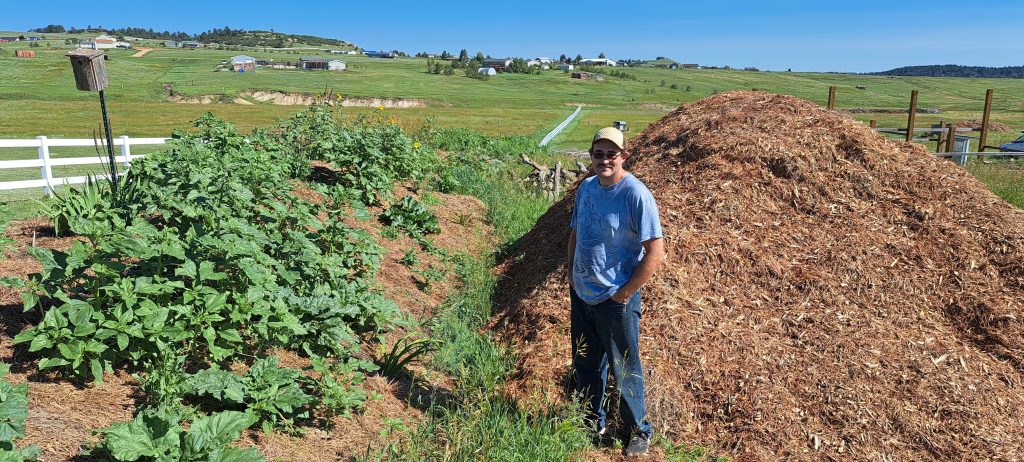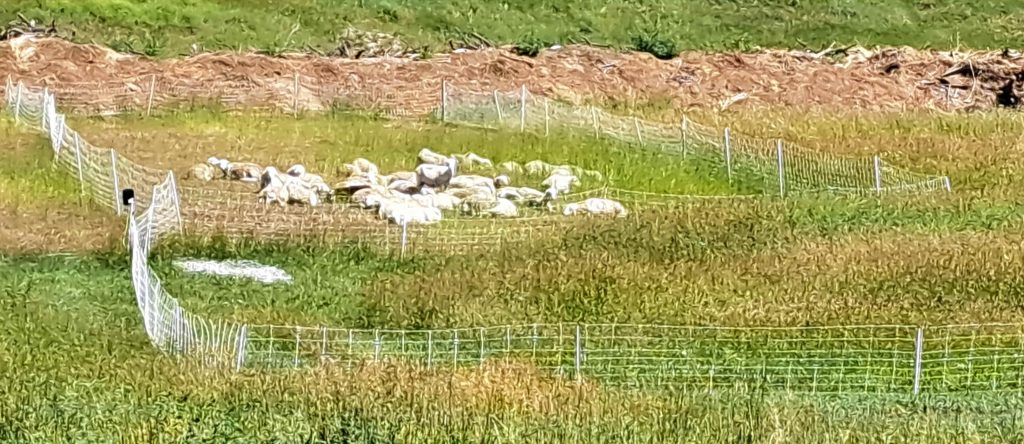By Janet Sellers
“The nation that destroys its soil destroys itself.”— Franklin D. Roosevelt (U.S. president 1933-45) in a letter to state governors in 1937.
I recently visited Will Vogl’s Black Forest farm where he shared his “living soil” restoration projects: hugelkultur (moist mound culture farming) and pastureland reclamation using age-old farming methods. The rich, moisture-filled soil thrives with or without rain or irrigation.
Vogl explained, “It depends on the source, but a 1% increase in soil organic matter (SOM) in the top 12 inches of soil will increase the soil’s natural water storage capacity by 20 to 30,000 gallons per acre. Here on our land, we have increased our SOM by around 2% in places of our pasture we have treated with compost, essentially allowing our land to hold an additional 50,000 gallons of water per acre over what it could before.
Vogl shared some of his information resources with me such as the USDA Forest Service as well as the USDA Natural Resources Conservation Service information at this link: www.nrcs.usda.gov/.
We know from history that our own country had famine and other disasters when we didn’t steward our land as nature intended. As far back as 1937, U.S. President Franklin D. Roosevelt wrote a letter urging state governors to implement soil conservation laws in reference to the horrific drought that caused the dust bowl and famine. There are ways to tend the land using natural nutrients and moisture abilities for what the soil—our Earth’s skin—needs to be resilient.
In his writings on the imperative for regenerative agriculture, Dr. Christopher J. Rhodes at Resilience.org explains how we got these erroneous notions. Throughout history, civilizations have thrived or declined based on the quality of their soils—a crucial factor for us to feed ourselves and our animals.


Manmade ecological disaster
The English gentleman farmer Jethro Tull (1674-1741) conceived and promoted his erroneous belief that land must be heavily plowed to control weeds. Extended use of such aggressive and poor farming strategies overtaxed unprotected U.S. farmlands and weakened the soil. This, and a decade of drought, created massive dust storms in places like the prairie region in the 1930s. “Suitcase farmers” of the 1910s and 1920s land boom had torn up the region’s native sod for quick profits, then abandoned it. Thousands of years of native grass evolution were destroyed, and the ground was naked and exposed.
President Roosevelt’s Civilian Conservation Corps of 1933-42 enrolled more than 3 million men and planted 3 billion trees to protect 21 million acres from soil erosion, aiding in the establishment of eight hundred state parks.
Even the ancient Greeks believed plants got all their nutrients from the soil. Many centuries later, erroneous beliefs based on mere logic and not on land experience have caused civilizations to destroy themselves via their soil practices.
**********
Janet Sellers is an avid “lazy gardener,” letting Mother Nature lead the way for pleasant natural landscapes. Reach her at JanetSellers@ocn.me
Other Hight Altitude Nature and Gardening articles
- High Altitude Nature and Gardening (HANG) – Gardening with nature’s beautiful bouncers (7/3/2025)
- High Altitude Nature and Gardening (HANG) – Enjoying nature in summer, high altitude landscaping, and weed control (6/7/2025)
- High Altitude Nature and Gardening (HANG) – May: new trees from tree branches, plant partners, bee kind (5/3/2025)
- High Altitude Nature and Gardening (HANG) – Earth Day and the joys of gardening (4/5/2025)
- High Altitude Nature and Gardening (HANG) – Wild outdoors: pine needle bread, gardening in March (3/1/2025)
- High Altitude Nature and Gardening (HANG) – Fermented February, cocoa mulch, and a chocolate “workout” (2/1/2025)
- High Altitude Nature and Gardening (HANG) – January is a seed starter month (1/4/2025)
- High Altitude Nature and Gardening (HANG) – Winter, our backyards, and forests (12/5/2024)
- High Altitude Nature and Gardening (HANG) – Let’s protect our forests, soil, and gardens (11/2/2024)
- High Altitude Nature and Gardening (HANG) – The garden as investment: gardening is like banking (10/5/2024)
